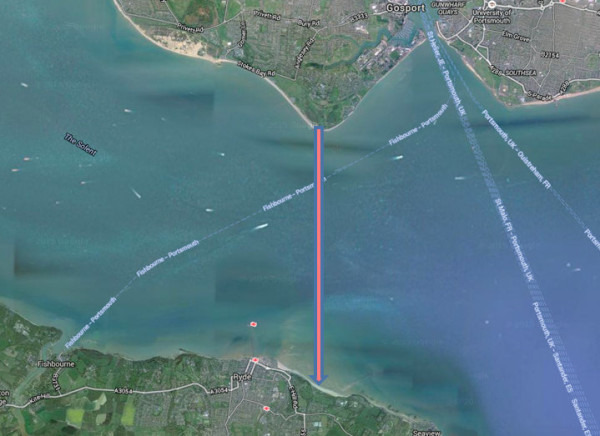For those who haven’t noticed yet, it’s April Fools today.
Of course, this means that a few media outlets have gone to great lengths to have a little fun and punk their audiences.

Look! It’s a proposal that might potentially improve transportation. Ha ha. Image from Isle of Wight Radio.
For gondolas, we’ve found two great stories so far: 1) A “green-lit” water-crossing cable car for the Isle of Wight, UK; and 2) A city-wide gondola network in Victoria, Canada.
The massive cable car proposal in Victoria is obviously ridiculous in that environment. But could maybe one or two strategically placed lines in the BC capital help improve transport and tourism? Of course. I see several interesting opportunities already.
As for the Isle of Wight prank, I honestly know nothing about the island. But from 30 seconds of Googling, it seems the island’s ferry system made 4.3 million trips across The Solent (strait) in 2012/2013.
There appears to be 3 ferry routes which range from ~6km (Lymington to Yarmouth, 40 minutes) to ~8km (Porsmouth to Ryde, 22 minutes) to ~11km (Portsmouth to Fishbourne, 45 minutes). The shortest distance between the island and the mainland is about ~4-5km.
For simplicity sake, we did a quick comparison between the Lymington to Yarmoth ferry route and a theoretical 3S system.
- Frequency: Ferry @ 1 hour wait / 3S Gondola @ 35-person cabins every ~30 seconds
- Travel Time: Ferry @ 40 minutes / 3S Gondola @ 12.5 minutes (assuming 6km, 8 m/s)
- Capacity: Ferry @ 360 pphpd / 3S Gondola @ 4,000-5,000 pphpd
Judging solely on these three basic parameters above, a cable car can be designed to operate at a much superior level of service than the ferry. Furthermore in terms of environmental factors, average wind speeds of 27km/h may have little effect on a cable car’s performance.

Vietnam’s 3.3km Vinpearl Cable Car is built with 9 towers (7 offshore towers in a seismically prone South China Sea) and transports passengers at heights of 115m. The cable car was actually built to replace the inefficient ferry system. Image by Flickr user gavindeas.
While it’s not possible to tell if a cable car can be economically viable at this time (depends on fare structure and volume), I suspect that adding another cross-strait transportation option may help drive down ferry ticket prices.
And this coincidentally might be important to locals and visitors since the strait is considered by many online commentators as one of the world’s most expensive stretches of water (single adult ticket costs US$14.25/£10).
I suppose the irony about this “joke” is there’s a good potential that there is significant technical and economical validity behind the idea. Despite the prank, this idea might actually deserve more analysis and attention.
Laughs and giggles aside, perhaps what is the most unsettling is this: while many of us in so called “developed” nations continue to mock and ridicule ropeways, many of those in “developing” nations have fully embraced the technology (see urban gondola map) and have decided to assess it based on its merits (rather than one’s preconceived notions).
For those who think a cross-Solent cable car is impossible, they might wish to take some inspiration from Vietnam’s 7.9km Hòn Thơm – Phú Quốc Ropeway. Best part is, the system has broken ground and scheduled to open in early 2017.

